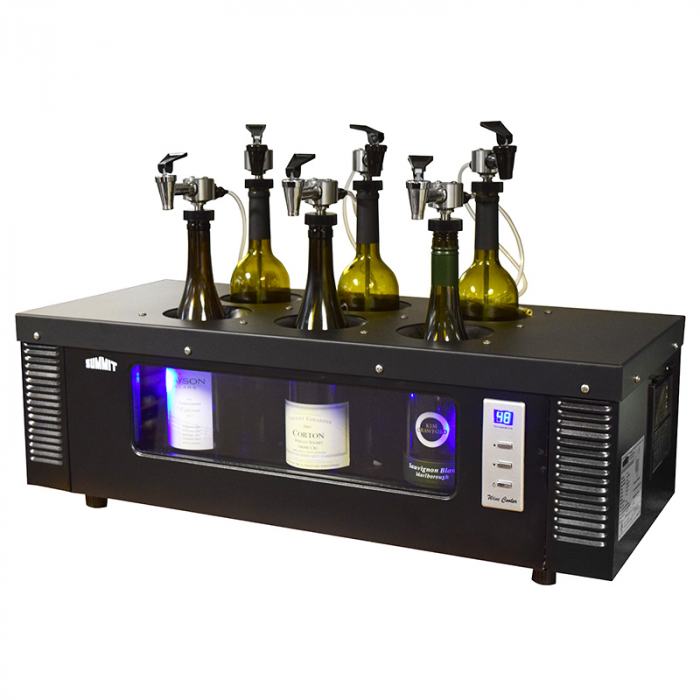Thermoelectric Wine Cooler vs Vapor Compression
One of the most important considerations in wine storage is that the wine is kept at the correct temperature. A temperature of between 55 and 65 degrees will allow the wine to age to perfection and prevent it from spoiling. Most wine refrigeration systems accomplish this with the use of a vapor compression system.

The WineKeeper 6-Bottle Wine Tasting Station with chiller is an inexpensive and flexible dispensing system ideal for tasting rooms and restaurants
Like a regular refrigerator compressor, a wine cooler compressor sends a refrigerant through a compressor. In the compressor, the refrigerant's molecules become pushed together, forming a superheated vapor. The superheated vapor travels through the condenser, which allows the room's air to cool the vapor slightly. The vapor then undergoes flash evaporation, turning it cold. As it continues through the coils of the evaporator unit, a fan blows air across the coils, vaporizing the refrigerant and keeping the air cold. The cold air is returned to the refrigerator, where it maintains the correct temperature.
Some wine refrigerators use another type of cooling system: thermoelectric cooling. A thermoelectric wine cooler uses what is known as the Peltier effect to provide cooling. A thermoelectric heat pump uses electrical energy to create a surface with a temperature gradient (in which one side is cold and one side is hot), and then continually pushes heat away from the cold side.
Because they don't include a compressor, thermoelectric wine coolers don't create the vibrations you associate with your refrigerator. Since keeping wine vibration-free to leave the sediment undisturbed and prevent deterioration is one of the more important aspects of wine storage, a vibration-free storage place can be of great value. Thermoelectric coolers are also much quieter than vapor compression systems, meaning that you can place them virtually anywhere in your home.
Thermoelectric wine coolers don't work well in areas warmer than about 80°, and cannot cool to temperatures much below 50°. They also aren't the best choice for large wine collections. But if your collection is small and you you keep it indoors, a thermoelectric wine cooler might be a great choice, as it can provide a vibration-free, temperature-controlled environment in which your wine can age to perfection.


